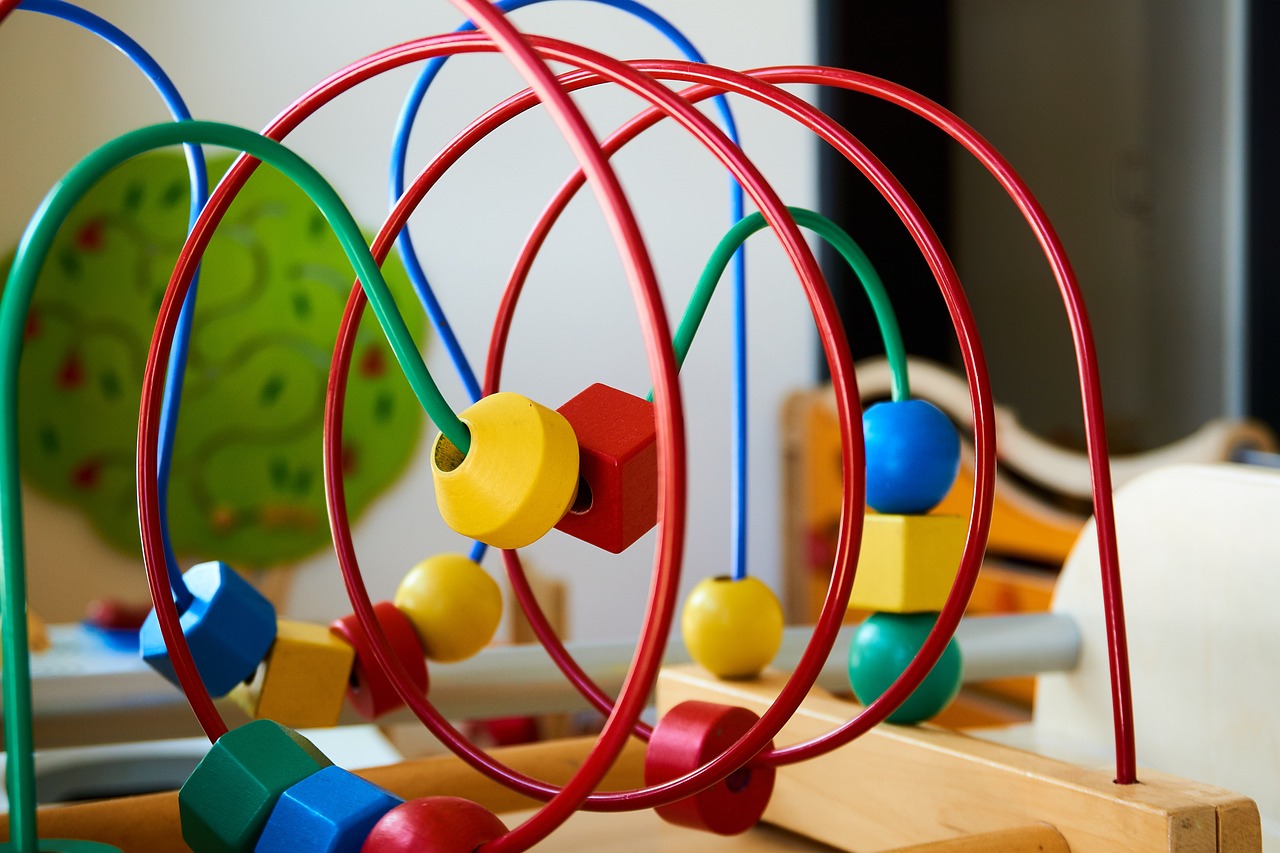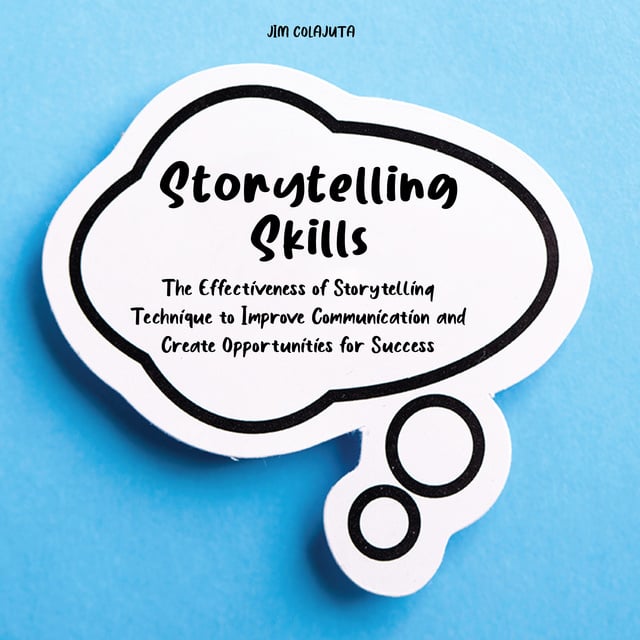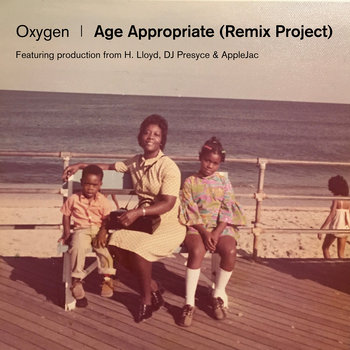Table of Contents
- The Art of Scrapbooking for Kids
- Fosters Creativity
- Enhances Fine Motor Skills
- Boosts Language Skills
- Promotes Organization
- Preserves Memories
- Select an Age-Appropriate Album
- Gather Supplies
- Choose a Theme
- Organize Photos
- Tell a Story
- Create Together
- Encourages Creativity
- Boosts Confidence
- Strengthens Family Bonds
- Enhances Communication Skills
- Creates Lasting Keepsakes
Scrapbooking is not just a hobby for adults; it’s a delightful and educational activity that can captivate the hearts and minds of children as well. Beyond being a creative outlet, scrapbooking offers an excellent platform for kids to express themselves, enhance their storytelling skills and develop a deep appreciation for preserving memories. In this article, we’ll explore the world of scrapbooking for kids, highlighting its numerous benefits and providing tips for getting started.
Scrapbooking is a creative adventure that knows no age limits and it’s a joy that extends its welcoming arms to children with open-hearted enthusiasm. Far from being reserved for adults alone, scrapbooking is a delightful and educational activity that can ignite the imaginations of young ones, offering them a unique opportunity to express themselves, nurture their storytelling skills and develop a profound appreciation for the beauty of preserving memories. Let’s delve into the captivating world of scrapbooking for kids, where the journey is as precious as the destination and the benefits are as boundless as a child’s imagination.
A World of Creativity: Scrapbooking is a canvas for a child’s imagination to run free. It’s a realm where they can experiment with colors, shapes and textures to create visual stories that are uniquely their own. This creative outlet encourages them to think outside the box, fostering innovation and originality in their artistic endeavors.
Storytelling Unleashed: Every scrapbook page is a blank page waiting to be filled with stories. For children, scrapbooking is a storytelling adventure where they can narrate their experiences, dreams and aspirations. As they select photos, arrange them and add captions or journal entries, they develop essential storytelling skills that will benefit them in writing, communication and self-expression.
Appreciating Memories: Scrapbooking is a tangible way for children to appreciate the value of memories. It teaches them to honor and cherish moments, whether they’re small everyday occurrences or significant life events. This appreciation instills a sense of gratitude and mindfulness, helping kids recognize the beauty in the ordinary.
Building Confidence: Creating scrapbook layouts is an empowering experience for children. It boosts their confidence as they see their ideas come to life and their efforts transform into beautiful pages. This sense of achievement extends beyond scrapbooking and can positively influence other aspects of their lives.
Developing Fine Motor Skills: Scrapbooking involves a range of fine motor skills, from cutting and gluing to precision placement of embellishments. Engaging in these activities helps children enhance their hand-eye coordination and dexterity, skills that are valuable in various aspects of their development.
Embracing Patience and Perseverance: The art of scrapbooking often requires patience and perseverance, qualities that are valuable life lessons. Children learn that creating something beautiful takes time and effort and they develop the ability to see projects through to completion.
Strengthening Bonds: Scrapbooking can also be a wonderful bonding activity for children and their family members. Whether it’s working on a project together, sharing stories or reminiscing about shared experiences, scrapbooking fosters meaningful connections and strengthens family ties.
Preserving Childhood: Through their scrapbooks, children create a time capsule of their childhood. These albums are treasure troves of memories that they can revisit in the years to come, offering a glimpse into their growth and evolution.
In the world of scrapbooking for kids, there are no rules, only boundless creativity and a sense of wonder. It’s an educational and artistic journey that celebrates the beauty of memories and storytelling. So, encourage the young ones in your life to embark on this delightful adventure, providing them with the tools and guidance they need to create their own scrapbook masterpieces. In doing so, you’re not only nurturing their creativity but also imparting valuable life skills that will serve them well as they grow and explore the world around them.
If you’d like to dive deeper into this subject, there’s more to discover on this page: Bookmark File Finish The Story Writing Prompts For Kids Mobtec Pdf …
The Art of Scrapbooking for Kids
Scrapbooking is essentially a form of visual storytelling and it can be an exciting and interactive way to engage children in various aspects of their lives. Here’s why introducing scrapbooking to kids is such a fantastic idea:
Scrapbooking is essentially a form of visual storytelling and it can be an exciting and interactive way to engage children in various aspects of their lives. Here’s why introducing scrapbooking to kids is such a fantastic idea:
Creativity and Self-Expression: Scrapbooking encourages children to express themselves creatively. They can choose colors, patterns and embellishments that resonate with their personalities and the stories they want to tell. This process of self-expression fosters a sense of individuality and self-confidence.
Preservation of Memories: Scrapbooks are timeless keepsakes. By involving kids in creating scrapbooks, you teach them the value of preserving memories and the importance of family history. They learn that their experiences are worth remembering and sharing.
Improved Fine Motor Skills: Scrapbooking involves cutting, pasting and arranging elements on a page, which helps improve a child’s fine motor skills and hand-eye coordination. These skills are essential for various aspects of life, including academics.
Storytelling and Language Development: Scrapbooking is all about telling stories. Kids learn to narrate their experiences, which contributes to language development. They practice articulating their thoughts and emotions, enhancing their communication skills.
Time Management and Planning: Creating a scrapbook requires organization and planning. Kids learn to manage their time, set goals and prioritize tasks. These skills are transferable to schoolwork and daily routines.
Bonding and Family Connections: Scrapbooking can be a collaborative activity that involves the whole family. It provides opportunities for bonding and sharing stories across generations. Kids feel a stronger connection to their family’s history and traditions.
Boosting Confidence: Completing a scrapbook page or project gives children a sense of accomplishment. They see their efforts materialize into something beautiful and meaningful, boosting their self-esteem.
Learning About Art and Design: Through scrapbooking, kids explore concepts like color harmony, balance and layout design. They gain an appreciation for art and design principles in a fun and practical way.
Reflection and Gratitude: Scrapbooking encourages kids to reflect on their experiences and express gratitude for the positive aspects of their lives. It fosters a sense of mindfulness and appreciation.
Life Skills: Ultimately, scrapbooking teaches kids valuable life skills, including organization, creativity and storytelling. These skills will serve them well as they grow and face various challenges in the future.
Introducing scrapbooking to children not only nurtures their creativity but also imparts important life lessons. It’s a journey of self-discovery and connection to the world around them, all while having a lot of fun in the process. So, grab some supplies, gather your little ones and embark on a creative adventure that will leave a lasting impact on their lives.
Don’t stop here; you can continue your exploration by following this link for more details: Bookmark File Finish The Story Writing Prompts For Kids Mobtec Pdf …

Fosters Creativity
Scrapbooking encourages kids to think outside the box and explore their artistic side. They can experiment with colors, patterns and design elements to create unique pages.
Scrapbooking not only encourages kids to think outside the box but also provides a delightful avenue for them to explore and nurture their artistic side. In this creative world of scrapbooking, children have the freedom to break free from conventions and let their imaginations soar. Here, they can experiment with a vivid spectrum of colors, playful patterns and a diverse array of design elements.
As they embark on their scrapbooking journey, kids discover the joy of self-expression and storytelling through visuals. Each page becomes a blank canvas where they can channel their thoughts, emotions and experiences into a visual narrative. This process empowers them to showcase their unique personalities and perspectives, fostering a sense of individuality and pride in their creations.
Moreover, scrapbooking teaches important life skills such as attention to detail, organization and patience. Kids learn how to curate and arrange elements thoughtfully, enhancing their eye for aesthetics and order. They also develop problem-solving skills as they navigate through design challenges, finding innovative solutions to make their pages stand out.
In addition to honing their artistic and cognitive abilities, scrapbooking offers a meaningful opportunity for bonding. Kids can share this hobby with family members, creating a collaborative space for storytelling and memory-making. It becomes a platform for intergenerational connections, where grandparents, parents and children can come together to celebrate shared experiences and create lasting memories.
In sum, scrapbooking is a captivating adventure that not only stimulates a child’s creativity but also cultivates essential life skills and fosters meaningful connections. It encourages them to see the world through an artistic lens, promoting self-discovery and expression while preserving the beauty of their memories for years to come.
Explore this link for a more extensive examination of the topic: Creativity for Kids Sensory Sticker Playset … – Amazon.com

Enhances Fine Motor Skills
Cutting, pasting and arranging photos and embellishments require fine motor skills. These activities help children develop better hand-eye coordination.
Engaging children in the art of cutting, pasting and arranging photos and embellishments in the context of scrapbooking is not just a creative endeavor; it’s a valuable opportunity to nurture their fine motor skills and enhance their hand-eye coordination. Here’s why these activities play a significant role in children’s development:
Fine Motor Skill Development: Fine motor skills involve the coordination of small muscles, particularly those in the fingers and hands. These skills are crucial for tasks like writing, tying shoelaces, buttoning clothes, and, in this case, scrapbooking. As children use scissors, handle small embellishments and manipulate photos, they are refining their fine motor abilities.
Precision and Control: Scrapbooking activities require precision and control. Cutting along lines, gluing small pieces and placing embellishments in specific locations all demand a level of dexterity and precision. Over time, children learn to refine their movements, improving their ability to manipulate objects with finesse.
Hand-Eye Coordination: Hand-eye coordination is the ability to synchronize visual input with motor skills. In scrapbooking, children need to visually assess where to cut, where to place an embellishment and how to align elements on the page. This constant interaction between what they see and how they use their hands enhances their hand-eye coordination.
Focus and Concentration: Scrapbooking encourages children to concentrate on the task at hand. It requires attention to detail and the ability to follow step-by-step instructions. As children immerse themselves in the creative process, they develop the capacity to stay focused on a single activity for an extended period, an essential skill for learning and problem-solving.
Spatial Awareness: Arranging photos and embellishments on a scrapbook page fosters spatial awareness. Children learn to gauge distances, proportions and relationships between objects. This spatial understanding extends beyond scrapbooking and can benefit them in various everyday tasks, such as organizing belongings and understanding spatial concepts in mathematics.
Creativity and Self-Expression: While developing fine motor skills and hand-eye coordination, children also have the opportunity to express their creativity. Scrapbooking allows them to make artistic choices, experiment with colors and design and tell stories through visuals. This combination of skill development and self-expression makes scrapbooking a holistic learning experience.
Boost in Self-Esteem: As children create scrapbook pages, they experience a sense of accomplishment. Completing tasks that require precision and creativity boosts their self-esteem and self-confidence. It instills a sense of pride in their abilities, motivating them to take on more challenging projects in the future.
Teamwork and Social Skills: Scrapbooking can be a collaborative activity, promoting teamwork and social interaction. Children can work together on a shared project, share ideas and problem-solve collectively. This collaborative aspect of scrapbooking fosters essential social skills and cooperation.
Sense of Ownership: Children take ownership of their scrapbook creations. They have a tangible result of their efforts that they can proudly share with family and friends. This sense of ownership encourages responsibility and a sense of commitment to completing projects.
In summary, scrapbooking is not just a fun and creative hobby; it’s also a valuable tool for children’s development. Through cutting, pasting and arranging photos and embellishments, children hone their fine motor skills, enhance their hand-eye coordination and gain a range of other cognitive and social benefits. So, as you embark on scrapbooking projects with children, you’re not only creating lasting memories but also fostering their growth and development in meaningful ways.
You can also read more about this here: Kids Puffy Stickers Set – 4 Sheets of Food Theme … – Amazon.com

Boosts Language Skills
Through journaling and writing captions, children can enhance their language skills. They learn to express themselves more effectively and thoughtfully.
Through journaling and writing captions, children can embark on a journey of linguistic and cognitive growth. Here’s an extension of the idea:
“Encouraging children to engage in journaling and write captions for their scrapbook entries is not just a creative endeavor; it’s a powerful tool for fostering language skills and promoting thoughtful self-expression. Here are some ways in which these activities can have a positive impact on children:
Language Development: Journaling and caption writing provide children with a practical context for using language. They learn to select words, phrases and sentence structures that best convey their thoughts and emotions. This process naturally expands their vocabulary and language proficiency.
Communication Skills: As children write about their experiences, they practice articulating their thoughts and feelings in a clear and coherent manner. This enhances their ability to communicate effectively, whether in writing or speaking, helping them express themselves confidently and eloquently.
Creative Expression: Writing captions allows children to get creative with their language. They can experiment with metaphors, similes and descriptive language to make their captions more engaging and vivid. This fosters a love for language and storytelling.
Emotional Intelligence: Journaling encourages children to reflect on their experiences and emotions. Through words, they learn to identify and process their feelings, which is essential for emotional intelligence. It helps them understand themselves and relate to others empathetically.
Critical Thinking: Writing captions for scrapbook entries requires children to think critically about the content and its significance. They must decide what details to include, how to frame their narratives and what emotions to convey. These cognitive processes enhance their analytical and problem-solving skills.
Attention to Detail: When journaling and writing captions, children become more observant and detail-oriented. They learn to notice and document the subtleties of their experiences, which is a valuable skill in both academic and real-life contexts.
Memory Enhancement: Writing about events helps solidify memories. Children who journal their experiences are more likely to remember them vividly. This not only aids in recalling precious moments but also supports overall cognitive development.
Self-Reflection: Journaling encourages self-reflection. Children can look back on their entries and see how they’ve grown, what they’ve learned and how their perspectives have evolved over time. This introspection promotes self-awareness and personal growth.
Family Bonding: Collaborative journaling or sharing scrapbook entries with family members can create bonding experiences. It encourages children to discuss their memories, fostering meaningful conversations and connections within the family.
Confidence Boost: Successfully documenting their experiences and emotions through writing can boost a child’s self-esteem and self-confidence. They realize the power of their words and the impact they can have through effective communication.
Incorporating journaling and caption writing into a child’s scrapbooking journey not only enhances their language skills but also nurtures their cognitive and emotional development. It empowers them to be effective communicators, reflective thinkers and lifelong lovers of language.”
To expand your knowledge on this subject, make sure to read on at this location: Importance of Writing Skills for Children – GetLitt!

Promotes Organization
Scrapbooking teaches kids the importance of organization as they sort and categorize photos and keepsakes. This skill can be valuable in many aspects of life.
Scrapbooking is not just a creative pastime for kids; it’s a valuable educational tool that imparts lifelong skills, with organization being one of its foundational lessons. Here’s an extended exploration of how scrapbooking nurtures the essential skill of organization and its broader applications in various aspects of life:
1. Order in Chaos: Scrapbooking presents kids with a delightful challenge—taking a jumble of photographs, mementos and memories and turning them into beautifully organized and coherent layouts. This process teaches children how to bring order to chaos, a skill they can apply in academic pursuits, problem-solving and everyday tasks.
2. Categorization Proficiency: As children embark on their scrapbooking journeys, they learn to categorize and sort materials based on themes, events or sentiments. This practice hones their ability to classify information logically, an ability that proves valuable in subjects like science, history and mathematics.
3. Attention to Detail: Successful scrapbooking often requires an acute attention to detail. Kids discover that the smallest embellishment, caption or layout choice can make a significant difference in the overall impact of their project. This attention to detail can translate into careful work in school assignments and professional endeavors where precision is crucial.
4. Time Management: Planning and completing a scrapbooking project within a reasonable timeframe teaches kids the importance of time management. They must allocate their time wisely to gather materials, design layouts and complete journaling. This skill becomes invaluable as they juggle various responsibilities in school and later in their careers.
5. Creative Problem Solving: Scrapbooking often involves creative problem-solving. Kids may encounter challenges such as fitting photos on a page, coordinating colors or finding alternative materials for embellishments. This encourages them to think creatively and find innovative solutions—a skill that extends far beyond the realm of crafting.
6. Emotional Intelligence: Scrapbooking isn’t just about visual appeal; it’s about storytelling and conveying emotions. As kids select and arrange photos and keepsakes, they learn to express their feelings and experiences effectively. This emotional intelligence enhances their ability to communicate and empathize with others.
7. Memory Retention: Creating scrapbooks naturally reinforces memory retention. Kids recall and relive events as they work on their projects. This memory-enhancing technique can be applied to studying for exams or remembering important dates and facts.
8. Respect for Keepsakes: Scrapbooking instills a sense of respect and care for sentimental items and memories. Children learn to handle keepsakes with care, a mindset that can extend to valuing their possessions and respecting the belongings of others.
9. Creative Confidence: As children witness their scrapbooking projects come to life, they develop creative confidence. This belief in their ability to create and organize translates into a willingness to tackle new challenges, whether in school, extracurricular activities or personal pursuits.
10. Lifelong Skill: Perhaps most importantly, the organization skill cultivated through scrapbooking is a lifelong asset. It equips kids with the ability to stay organized in school, manage their schedules and even maintain order in their homes and workplaces as adults.
In essence, scrapbooking is not just about crafting beautiful memory albums; it’s a transformative experience that equips children with invaluable skills and qualities. By teaching organization and fostering creativity, attention to detail and problem-solving, scrapbooking sets the stage for success in school, work and life at large. It’s a lesson that keeps on giving, nurturing young minds to become organized, innovative and well-rounded individuals.
To delve further into this matter, we encourage you to check out the additional resources provided here: Bookmark File Finish The Story Writing Prompts For Kids Mobtec Pdf …

Preserves Memories
Scrapbooking provides a tangible way for kids to preserve and revisit their favorite memories, making them more appreciative of the moments that matter.
Scrapbooking is not just a creative hobby; it’s a powerful tool that can help children develop essential life skills while fostering a deep appreciation for cherished moments. When kids engage in scrapbooking, they embark on a journey that combines artistry with storytelling and this has numerous benefits:
Creativity and Self-Expression: Scrapbooking encourages children to express themselves creatively. They can experiment with colors, textures and design, allowing their imaginations to run wild. This freedom of expression boosts their confidence and nurtures their creative thinking skills.
Fine Motor Skills: The meticulous cutting, pasting and arranging involved in scrapbooking are excellent for fine motor skill development. These activities help improve hand-eye coordination and dexterity, which are essential for various everyday tasks.
Organization and Planning: To create a meaningful scrapbook, kids need to plan and organize their materials and thoughts. This teaches them valuable skills in project management and time organization, setting the stage for future academic and professional success.
Reflection and Gratitude: Scrapbooking is an opportunity for kids to reflect on their experiences and express gratitude for the people and moments that matter most to them. This practice instills a sense of appreciation for the beauty of life and the importance of relationships.
Memory Enhancement: As kids curate their scrapbooks, they revisit their memories, reinforcing them in their minds. This process strengthens memory recall and ensures that significant moments are not forgotten.
Family Bonding: Scrapbooking can be a shared activity with family members, creating bonding opportunities. It encourages open communication and storytelling, bridging generational gaps and preserving family history.
Digital Detox: In an age dominated by screens and digital devices, scrapbooking provides a delightful break from technology. It offers a hands-on, screen-free activity that engages children in a tangible and sensory experience.
Emotional Well-being: The act of preserving positive memories in a scrapbook can enhance a child’s emotional well-being. It creates a sense of accomplishment, happiness and pride in their own creations.
In summary, scrapbooking is more than just an artistic hobby; it’s a multifaceted tool for children’s holistic development. It empowers them with creativity, organization skills and an appreciation for life’s precious moments, all while fostering a deeper connection with their own stories and the world around them.
You can also read more about this here: 18 Creative Scrapbook Ideas to Preserve Your Family Memories

Select an Age-Appropriate Album
Choose an album that suits your child’s age and interests. For younger kids, consider larger, spiral-bound albums with simple page layouts. Older kids might enjoy more complex albums with various page sizes and designs.
Certainly! Here’s an extended idea:
“Choosing the right album for your child’s scrapbooking project can enhance their creativity and enjoyment. Start by selecting an album that suits your child’s age and interests, as this will make the experience more engaging and memorable.
For younger kids, opt for larger, spiral-bound albums with simple page layouts. These albums provide ample space for their artwork and are easy for little hands to handle. Consider using bright and colorful backgrounds to spark their imagination. You can also add fun stickers and embellishments that align with their favorite themes or characters.
As children grow older, their artistic skills and interests evolve. Older kids might find greater satisfaction in more complex albums with various page sizes and designs. Explore options like expandable post-bound albums or customizable ring-binder albums. This allows them to experiment with different layouts and techniques, fostering their creativity.
Encourage your older child to incorporate a mix of photographs, mementos and written memories. They can explore techniques such as layering, paper folding and mixed media to make their scrapbook truly unique. Provide them with a variety of scrapbooking supplies, such as decorative papers, stamps and die cuts, to fuel their creative expression.
Ultimately, the choice of album and materials should align with your child’s age, skills and interests. This not only nurtures their artistic abilities but also creates a cherished keepsake filled with memories that they can revisit with pride and nostalgia in the years to come.”
Don’t stop here; you can continue your exploration by following this link for more details: Introduce Yourself

Gather Supplies
Collect an assortment of kid-friendly scrapbooking supplies, including colored paper, stickers, markers, kid-safe scissors, glue sticks, and, of course, photos and mementos.
Creating a scrapbooking experience for kids is not only a fun and creative activity but also an opportunity to foster their imagination and storytelling skills. To make this experience enjoyable and engaging, it’s important to gather a diverse array of kid-friendly scrapbooking supplies. Here’s an expanded idea on how to create an inviting and imaginative scrapbooking setup for children:
1. Vibrant Colored Paper: Start with a selection of colorful and patterned papers. These will serve as the canvas for their creativity. Encourage kids to choose papers that resonate with the theme or mood of their scrapbook pages. Whether it’s bright and cheerful colors or pastels for a softer touch, the paper sets the stage for their artistic journey.
2. Exciting Stickers: Stickers are a fantastic addition to any kid’s scrapbooking kit. They come in countless themes, from animals and nature to superheroes and outer space. Stickers add instant flair and personality to the pages and allow kids to express their interests and style.
3. Assorted Markers: Provide a variety of markers in different colors and tip sizes. Markers allow kids to draw, write and embellish their pages with their own hand-drawn artwork. Encourage them to use markers to add captions, doodles or custom designs that complement their photos.
4. Kid-Safe Scissors: Safety is paramount, so ensure you have child-friendly scissors with rounded tips. These scissors allow kids to safely cut out photos, shapes and patterns. Supervise younger children to make sure they handle scissors safely.
5. Glue Sticks: Opt for non-toxic, washable glue sticks that are easy for little hands to use. Glue sticks are perfect for adhering photos, paper and other embellishments securely to the scrapbook pages without the mess of liquid glue.
6. Photos and Mementos: Gather a selection of age-appropriate photos and mementos that kids can use to tell their stories. These could be pictures of family members, friends, pets or memorable outings. Encourage kids to include special items like ticket stubs, postcards or small souvenirs that hold sentimental value.
7. Themed Embellishments: Include themed embellishments that correspond to the interests of the child. For example, if they love animals, provide animal-themed stickers or die-cut shapes. If they enjoy sports, consider sports-themed papers or stickers. Tailoring the supplies to their interests makes the experience more engaging.
8. Child-Friendly Templates: Consider offering child-friendly templates or stencils that kids can use to create shapes or borders. These templates can guide their creative process and provide structure to their layouts.
9. Creative Space: Dedicate a comfortable and well-lit creative space for the kids to work in. Make sure the workspace is large enough for them to spread out their materials and be comfortable while crafting.
10. Encouragement and Freedom: Lastly, provide encouragement and freedom. Let kids know that there are no strict rules in scrapbooking; it’s about expressing themselves and telling their own stories. Be there to assist and offer guidance but allow them to take the lead and make their own creative choices.
Scrapbooking for kids is a delightful way to nurture their creativity, storytelling skills and attention to detail. By providing a range of kid-friendly supplies and a supportive environment, you’re fostering their artistic growth while helping them create treasured keepsakes filled with their unique memories and imagination.
For additional details, consider exploring the related content available here Fall Art for Toddlers: Creative Projects – Kokotree

Choose a Theme
Encourage your child to select a theme for their scrapbook. It could be a family vacation, a school year, a birthday party or even a favorite hobby or animal.
“Empower your child to choose a captivating theme for their scrapbook. It might revolve around a cherished family vacation, the adventures of a school year, the joy of a birthday party or their enthusiasm for a favorite hobby or adorable animal. Inspire their creativity and watch as they bring their chosen theme to life, weaving a tapestry of memories uniquely theirs within the pages of their scrapbook.”
Looking for more insights? You’ll find them right here in our extended coverage: 29 Lovely Scrapbook Ideas to Inspire Creativity

Organize Photos
Help your child organize their photos chronologically or by theme. Sorting and categorizing photos are valuable skills they can learn through this process.
Help your child organize their photos chronologically or by theme and in doing so, you’re not just facilitating their scrapbooking journey; you’re equipping them with essential life skills. Sorting and categorizing photos offer valuable lessons that extend far beyond the crafting table.
1. Time Management: Sorting photos chronologically teaches children about the passage of time and the importance of organization in managing their daily lives. It’s an opportunity to discuss the concept of past, present and future.
2. Decision-Making: Choosing how to group photos by theme encourages critical thinking and decision-making. It prompts them to consider which pictures belong together and why, fostering their problem-solving abilities.
3. Attention to Detail: As children scrutinize each photo, they develop an eye for detail. They notice the subtle differences between shots, honing their observation skills.
4. Patience: Sorting and categorizing photos can be a time-consuming process, teaching children the value of patience and persistence in achieving their goals.
5. Memory Enhancement: Reflecting on past events while organizing photos can enhance memory retention. Discussing the stories behind the pictures helps children remember details and strengthen their recall abilities.
6. Organizational Skills: Learning to categorize and arrange photos neatly in an album lays the foundation for strong organizational skills. These skills can be applied to schoolwork, household chores and future responsibilities.
7. Creativity: While organizing photos by theme, children have the chance to think creatively about how to group them. This sparks imaginative thinking and encourages them to see connections and patterns.
8. Emotional Expression: Sorting photos can be an emotional process. It provides an opportunity for children to express their feelings, as they may come across images that evoke memories and emotions.
9. Attention Span: Going through a collection of photos requires focus and concentration. This practice can help improve a child’s attention span and ability to stay engaged in tasks.
10. Project Management: Completing a scrapbook is a project that involves planning, execution and completion. These are valuable project management skills that can benefit children in various aspects of their lives.
By encouraging your child to organize photos for scrapbooking, you’re not only enriching their creative pursuits but also equipping them with a toolkit of skills that will serve them well in school, work and personal development. Scrapbooking becomes a gateway to learning, self-expression and personal growth.
Should you desire more in-depth information, it’s available for your perusal on this page: 18 Creative Scrapbook Ideas to Preserve Your Family Memories

Tell a Story
Guide your child in storytelling. Ask them to share their thoughts and feelings about the photos and help them craft captions or journal entries to accompany each page.
Fostering storytelling skills in your child through scrapbooking is not only a creative endeavor but also a wonderful way to strengthen their communication and emotional expression. Here’s how to guide your child in this storytelling journey:
1. Encourage Reflection: Start by encouraging your child to reflect on the photos they’ve selected. Ask open-ended questions like, “What was happening in this picture?” or “How did you feel at that moment?” This prompts them to delve into the memories associated with the images.
2. Emphasize Emotions: Help your child connect with their emotions. Encourage them to express how they felt during the captured moments. Whether it was joy, excitement, surprise or even nostalgia, emotions add depth to their stories.
3. Craft Captivating Captions: Crafting captions is an art in itself. Encourage your child to come up with descriptive, engaging captions that provide context to the photos. Captions should be concise but informative, capturing the essence of the moment.
4. Journaling Journey: If your child is comfortable, introduce journaling as a way to explore their thoughts and experiences more deeply. Journal entries can be as short as a sentence or as long as a paragraph, depending on their age and interest. This practice helps them express themselves and develop their writing skills.
5. Share Personal Insights: Share your own scrapbooking experiences and insights with your child. Let them see how storytelling through visuals and words has been a meaningful part of your life. Your enthusiasm and shared stories can inspire them further.
6. Create a Theme: Consider creating a themed scrapbook with your child. This can be based on a specific event, like a family vacation, a birthday party or even a year-in-review album. A theme provides structure and helps in crafting a cohesive narrative.
7. Include Their Artwork: Encourage your child to add their artistic touch to the pages. This could involve drawing, doodling or even adding stickers and embellishments. Their creative contributions make the scrapbook even more personal.
8. Celebrate Milestones: Scrapbooking is an excellent way to celebrate milestones and achievements in your child’s life. Whether it’s their first day of school, a sports victory or a special friendship, these moments can become cherished chapters in their scrapbook story.
9. Let It Evolve: Remember that scrapbooking is a journey and it’s okay if your child’s storytelling style evolves over time. Their interests and abilities will grow and their scrapbooks will reflect these changes.
10. Share and Celebrate: Once the scrapbook is complete, take time to celebrate the storytelling achievement. Share the scrapbook with friends and family and encourage your child to narrate the stories behind each page. This not only boosts their confidence but also strengthens their storytelling skills.
Guiding your child in storytelling through scrapbooking is a gift that keeps on giving. It nurtures creativity, communication and self-expression while preserving precious memories. It’s a bonding experience that allows you to connect with your child on a deeper level and create lasting memories together. So, embark on this storytelling journey and watch as your child’s scrapbook pages come alive with their unique stories and perspectives.
To expand your knowledge on this subject, make sure to read on at this location: Writing doesn’t have to be boring: Here’s how to make it fun! | The …

Create Together
Scrapbooking can be a wonderful bonding experience. Sit down with your child and work on your projects side by side. Share ideas, techniques and stories as you go.
Scrapbooking is more than just a creative hobby; it’s a heartwarming opportunity for bonding and making cherished memories with your child. When you sit down together, working on your projects side by side, it becomes a shared journey filled with meaningful connections. Here’s why scrapbooking is a wonderful bonding experience and how you can make the most of this special time:
Quality Time: Scrapbooking provides dedicated quality time with your child. In a world filled with distractions, this activity allows you to focus on each other, creating a valuable space for meaningful conversations and shared experiences.
Creative Collaboration: Collaborating on scrapbooking projects fosters creativity and teamwork. You can brainstorm ideas, choose colors and themes together and experiment with various techniques. This collaborative process not only nurtures your child’s creativity but also strengthens your creative connection.
Storytelling Moments: Scrapbooking is all about storytelling. As you work on your projects, you can share stories and memories associated with the photos and mementos you’re including. It’s an opportunity to reminisce about family vacations, special occasions or even everyday moments.
Skill Building: Scrapbooking offers a chance to teach and learn new skills. You can introduce your child to artistic techniques, like cutting, pasting and decorating. It’s a hands-on learning experience that can enhance their fine motor skills, attention to detail and creativity.
Personal Expression: Scrapbooking allows both you and your child to express your individuality. Encourage your child to make design choices and select embellishments that resonate with their personality. This freedom of expression reinforces self-confidence and self-discovery.
Preserving Family History: Scrapbooks serve as tangible records of your family’s history. By involving your child in the process, you’re passing down the tradition of documenting and preserving family stories and heritage. These scrapbooks can become treasured heirlooms.
Celebrating Achievements: Use scrapbooking as an opportunity to celebrate your child’s achievements and milestones. Create dedicated pages for their achievements in school, sports or hobbies. These pages serve as visual reminders of their growth and accomplishments.
Shared Goals and Rewards: Set shared goals and rewards for your scrapbooking sessions. For example, you can work towards completing a themed album together or finishing a certain number of pages. Celebrate your achievements with small rewards, like a favorite treat or a special outing.
Creating Lasting Bonds: Scrapbooking is not just about the finished pages; it’s about the bonds you create along the way. The memories you make while scrapbooking together become a part of your shared history, strengthening your connection.
Support and Encouragement: Scrapbooking sessions can also provide a platform for offering support and encouragement. It’s a safe space for your child to express themselves and receive positive feedback and guidance.
Incorporating scrapbooking into your bonding routines is a beautiful way to nurture your relationship with your child. It’s a journey filled with creativity, shared stories and the creation of tangible keepsakes that encapsulate your special moments together. As you sit side by side, working on your projects, you’re not just crafting beautiful pages; you’re weaving a tapestry of love, connection and shared experiences that will be treasured for a lifetime.
To delve further into this matter, we encourage you to check out the additional resources provided here: Fall Art for Toddlers: Creative Projects – Kokotree

Encourages Creativity
Scrapbooking fosters creativity and allows children to experiment with colors, patterns and design elements.
Scrapbooking fosters creativity and allows children to experiment with colors, patterns and design elements, providing them with a host of valuable benefits that extend far beyond the craft table. Here’s why encouraging children to embrace scrapbooking can be a rewarding and enriching experience:
Artistic Expression: Scrapbooking is a form of artistic expression that enables children to unleash their creativity. It’s a canvas for them to experiment with different art supplies, techniques and materials. Whether it’s choosing the perfect color scheme, arranging photos or adding decorative elements, each step offers an opportunity for self-expression.
Fine Motor Skills: Scrapbooking requires precise hand-eye coordination and fine motor skills. Cutting, pasting and arranging elements on a page help children refine their dexterity and control. These skills are not only essential for crafting but also have a broader application in everyday life, such as writing and drawing.
Storytelling and Narrative Skills: Scrapbooking encourages children to tell stories through visuals and words. They learn to structure their thoughts, organize events chronologically and convey emotions through their design choices and journaling. This enhances their storytelling and narrative skills, which are valuable in both creative and academic contexts.
Critical Thinking and Planning: Creating a scrapbook page involves planning and critical thinking. Children must decide how to arrange photos, embellishments and text to create an aesthetically pleasing and cohesive design. This process nurtures their ability to make decisions, solve problems and think critically.
Boosts Self-Esteem: Completing a scrapbook page or project gives children a sense of accomplishment. They can take pride in their creations, which can boost their self-esteem and confidence. This positive reinforcement encourages them to tackle new challenges with enthusiasm and self-assurance.
Preservation of Memories: Scrapbooking introduces the concept of preserving memories at an early age. Children learn that their experiences and special moments can be documented and cherished for years to come. This awareness of the value of memories promotes gratitude and reflection.
Family Bonding: Scrapbooking can be a wonderful family activity. When children and parents or grandparents work on scrapbook projects together, it fosters quality bonding time. It’s an opportunity to share stories, discuss family history and collaborate on creative endeavors, strengthening family ties.
Organization and Attention to Detail: Scrapbooking teaches children the importance of organization and attention to detail. They must keep track of materials, photos and layouts. Being meticulous in their work ensures that their scrapbook pages turn out beautifully.
Enhanced Observation Skills: As children select photos and design elements for their scrapbook pages, they become more attuned to details in their environment. They start to notice colors, textures and patterns in everyday life, enhancing their observational skills and appreciation for the world around them.
Emotional Outlet: Scrapbooking can serve as an emotional outlet for children. It allows them to express their feelings, whether it’s excitement, joy, sadness or nostalgia. Through their creative choices and journaling, they can process and communicate their emotions in a safe and constructive way.
In conclusion, scrapbooking is more than just a creative hobby; it’s a tool for nurturing a child’s artistic, cognitive and emotional development. It encourages them to explore their imagination, cultivate essential life skills and create lasting memories in a tangible and meaningful form. So, whether it’s a rainy day activity or a regular creative pursuit, scrapbooking can be a valuable addition to a child’s life, promoting growth and self-expression in a fun and engaging manner.
To expand your knowledge on this subject, make sure to read on at this location: How to Inspire a Lifelong Love of Music and the Arts

Boosts Confidence
Completing a scrapbook project gives children a sense of accomplishment and boosts their self-esteem.
Completing a scrapbook project gives children a profound sense of accomplishment and contributes significantly to boosting their self-esteem. This creative endeavor not only allows them to express themselves but also offers valuable life lessons and personal growth opportunities. Here’s how:
Tangible Achievement: Children can physically see and hold their completed scrapbook. This tangible result of their efforts serves as a constant reminder of what they are capable of achieving, reinforcing their sense of accomplishment.
Attention to Detail: Scrapbooking encourages attention to detail. Children learn to focus on small elements like arranging photos, choosing embellishments and writing captions. This attention to detail fosters patience and precision, valuable skills in many aspects of life.
Personal Expression: Scrapbooking is a medium for personal expression. Children can showcase their creativity, individuality and unique perspectives through design choices, color schemes and layout decisions. This fosters self-expression and self-discovery.
Organizational Skills: Organizing photos, memorabilia and designing layouts require organizational skills. Children develop the ability to categorize, sequence and plan, which are important skills applicable to schoolwork and daily life.
Narrative Storytelling: Scrapbooking is a form of storytelling. Children learn to arrange photos and add captions or journal entries to create a coherent narrative. This skill enhances their ability to communicate and convey their thoughts effectively.
Self-Reflection: While working on a scrapbook, children often reflect on their experiences and memories. This introspection allows them to gain a deeper understanding of themselves and the events that have shaped them.
Creative Problem-Solving: In scrapbooking, unexpected challenges may arise, such as choosing the right layout or finding a creative solution for a missing photo. Children develop problem-solving skills as they navigate these challenges.
Pride in Work: When children see their finished scrapbook, they develop a sense of pride in their work. They understand that they have created something meaningful and beautiful, fostering a positive self-image.
Time Management: Completing a scrapbook involves managing time effectively. Children learn to allocate time for different aspects of the project, balancing creativity with planning and execution.
Resilience: Scrapbooking may involve mistakes or changes in plans. Children learn resilience as they adapt to these challenges, correct errors and continue working towards their goal.
Sharing and Connecting: Sharing their scrapbook with family and friends provides a sense of accomplishment and strengthens relationships. It’s an opportunity to connect with others through shared memories and creative expression.
Long-Term Commitment: Scrapbooking often requires dedication over an extended period. Children experience the satisfaction of seeing a project through to completion, teaching them perseverance and commitment.
Boosting Confidence: As children see their abilities grow through scrapbooking, their confidence also increases. They become more willing to tackle new challenges and explore their interests further.
In essence, completing a scrapbook project is not just about creating a beautiful keepsake; it’s a journey of self-discovery, skill development and personal growth for children. It instills a sense of pride and accomplishment that extends far beyond the pages of the scrapbook, shaping their character and boosting their self-esteem in various aspects of their lives.
If you’d like to dive deeper into this subject, there’s more to discover on this page: Favorite Therapeutic Activities for Children, Adolescents, and …

Strengthens Family Bonds
Scrapbooking often revolves around family memories, creating opportunities for kids to connect with their roots and learn about their family history.
Scrapbooking is not just a creative hobby; it’s a bridge that connects generations, offering a unique opportunity for children to delve into their family’s rich history and heritage. In this digital age, where memories can be fleeting and disconnected, scrapbooking stands as a tangible and heartfelt tribute to the past.
When kids engage in scrapbooking alongside their parents or grandparents, they embark on a journey through time, exploring the stories and experiences that have shaped their family. Through photographs, handwritten notes and carefully preserved mementos, they can see their ancestors as real people with dreams, adventures and cherished moments.
Each scrapbook page becomes a window into a different era and as children piece together the puzzle of their family’s past, they gain a deeper appreciation for the struggles and triumphs that have paved the way for their present lives. The process of selecting photos, arranging layouts and crafting captions allows them to actively engage with their family’s narrative, making history come alive in their hearts and minds.
Moreover, scrapbooking nurtures essential life skills in kids. They learn about organization, creativity and attention to detail while also developing a keen eye for design and aesthetics. These skills not only enhance their artistic abilities but also serve them well in various aspects of their education and future endeavors.
In addition to fostering a stronger connection with their roots, scrapbooking provides an excellent platform for open conversations within the family. Children can ask questions, prompt discussions and gain insights into their family’s cultural traditions, values and values that might otherwise be lost in the hustle and bustle of modern life.
As kids work on their scrapbooking projects, they are creating new memories to be cherished by future generations. These albums become treasured heirlooms, passed down through the family, preserving not only the memories of the past but also the bonds between family members. In a world that is constantly changing, scrapbooking remains a timeless tradition that connects the past, present and future, leaving a legacy of love and heritage for generations to come.
Should you desire more in-depth information, it’s available for your perusal on this page: Bookmark File Finish The Story Writing Prompts For Kids Mobtec Pdf …

Enhances Communication Skills
Writing captions and journal entries encourages children to express themselves and improve their communication skills.
Writing captions and journal entries can be a transformative activity for children, nurturing not only their self-expression but also their essential communication skills. Encouraging youngsters to engage in these practices not only supports their emotional and cognitive development but also empowers them to articulate their thoughts and feelings effectively.
Enhancing Self-Expression: Writing captions and journal entries provide a safe and creative outlet for children to express themselves. They can describe their daily experiences, share their dreams and reflect on their emotions. This process enables them to explore their inner world, fostering self-awareness and emotional intelligence. By putting their thoughts into words, they learn to identify and communicate their feelings, whether it’s joy, frustration or curiosity.
Vocabulary Expansion: Writing encourages children to search for the right words to convey their thoughts accurately. As they express themselves in writing, they are exposed to a broader range of vocabulary. This exposure naturally leads to the expansion of their language skills, allowing them to articulate their ideas with greater precision and richness. Over time, this vocabulary growth contributes to their overall communication competence.
Improved Communication Skills: Writing captions and journal entries are foundational activities that pave the way for improved communication skills. When children practice crafting sentences and paragraphs, they develop essential language competencies such as grammar, syntax and punctuation. These skills are transferable to oral communication, helping them become more articulate and effective speakers.
Critical Thinking and Reflection: Writing promotes critical thinking and reflection. Children learn to analyze their experiences, identify patterns and draw conclusions. This ability to think critically extends to their conversations with others. They become more adept at organizing their thoughts, presenting coherent arguments and engaging in meaningful discussions.
Confidence Building: As children see their thoughts and feelings come to life on paper, they gain confidence in their ability to communicate. This newfound self-assurance extends beyond writing and positively impacts their willingness to speak up, share ideas and participate actively in conversations, both at home and in educational settings.
Emotional Resilience: Writing can be therapeutic for children, helping them manage and cope with challenging emotions. When they encounter difficulties or conflicts, journaling provides a constructive way to process their feelings, find solutions and build emotional resilience. As they grow, they can carry these coping mechanisms into their interactions with others, fostering healthier relationships.
Incorporating caption-writing and journaling into a child’s routine is a valuable investment in their development. It not only enriches their self-expression but also equips them with the communication skills essential for success in school, relationships and life as a whole. Furthermore, it nurtures a lifelong appreciation for the power of words and the transformative impact of effective communication.
You can also read more about this here: Bookmark File Finish The Story Writing Prompts For Kids Mobtec Pdf …

Creates Lasting Keepsakes
Scrapbooks become treasured keepsakes that kids can revisit throughout their lives, cherishing the memories they’ve captured.
Scrapbooks become treasured keepsakes that kids can revisit throughout their lives, cherishing the memories they’ve captured. These carefully crafted books are not just repositories of photographs and mementos; they are time capsules of childhood, filled with the laughter, adventures and milestones that shape a person’s early years.
For children, a scrapbook is like a magic portal that transports them back in time. As they flip through its pages, they rediscover the joy of their first birthday party, the excitement of a family vacation, the warmth of holiday gatherings and the bonds they share with loved ones. Each page holds a piece of their personal history and these tangible artifacts serve as a bridge to the past.
These treasured keepsakes offer several profound benefits to kids:
Emotional Anchors: In times of change or uncertainty, flipping through their scrapbooks provides a sense of stability and connection to their roots. It reminds them of the constancy of love and the continuity of their life’s story.
Boosting Self-Esteem: Seeing their accomplishments, achievements and moments of joy celebrated in a scrapbook reinforces a child’s self-esteem and self-worth. It shows them that their experiences matter and are valued.
Family Connection: Scrapbooks often feature family members, friends and loved ones who have played significant roles in a child’s life. Revisiting these pages fosters a sense of belonging and strengthens familial bonds.
Storytelling Skills: Interacting with scrapbooks encourages children to ask questions, engage in storytelling and learn about their own history. It sparks curiosity and encourages them to explore their roots and family heritage.
Preserving Traditions: In a digital age where photos are often stored on devices, scrapbooks introduce kids to the tradition of tangible keepsakes. They learn the value of preserving memories in a format that can be touched, smelled and treasured.
Creativity and Craftsmanship: For children involved in the creation of the scrapbook, it’s a lesson in creativity, craftsmanship and attention to detail. It nurtures their artistic abilities and encourages them to express themselves.
As these young ones grow into adults, their scrapbooks continue to hold a special place in their hearts. They become a cherished link between past and present, a reminder of the journey they’ve undertaken and a testament to the love and care that went into documenting their formative years. These treasured keepsakes serve as a tangible testament to the importance of preserving memories and celebrating the beautiful tapestry of a child’s life.
Looking for more insights? You’ll find them right here in our extended coverage: Making a memory book for a person with dementia

Scrapbooking for kids is not just a creative pastime; it’s a journey of self-expression, skill development and memory preservation. It empowers children to tell their stories, express their creativity and celebrate the moments that make life special. As parents and caregivers, we can nurture their love for scrapbooking, providing them with the tools and guidance they need to embark on this rewarding and enriching adventure. So, set up a scrapbooking station, grab those photos and watch your child’s creativity and storytelling skills flourish in the world of scrapbooking.
Scrapbooking for kids is a wonderfully enriching endeavor that goes beyond mere crafting. It’s a pathway for children to embark on a journey of self-discovery, skill development and memory preservation, all while having heaps of fun along the way. Here’s how scrapbooking empowers kids and how parents and caregivers can support this creative adventure:
1. Self-Expression: Scrapbooking offers kids a canvas for self-expression. It encourages them to share their unique perspectives, thoughts and emotions through a visual medium. As they choose photos, colors and embellishments, they learn to articulate their feelings and ideas, fostering greater self-awareness and confidence.
2. Skill Development: Engaging in scrapbooking nurtures a wide range of skills. From fine motor skills required for cutting and pasting to decision-making skills when selecting layouts and designs, children develop essential abilities that will benefit them academically and creatively.
3. Storytelling: Scrapbooking is a storytelling platform where children learn to weave narratives around their memories. This strengthens their language and communication skills, helping them articulate their thoughts and experiences with clarity and creativity.
4. Memory Preservation: At its core, scrapbooking is about preserving memories. It teaches kids the value of cherishing life’s moments, both big and small. By compiling these memories in a tangible form, children cultivate gratitude and an appreciation for the beauty in everyday life.
5. Creativity Unleashed: The world of scrapbooking is a playground for creativity. Kids can experiment with colors, textures and design elements, giving them an outlet for boundless imagination. Encouraging them to think outside the box fosters innovative thinking and problem-solving skills.
6. Bonding Opportunities: Scrapbooking can be a wonderful bonding activity for parents and children. Working on projects together creates opportunities for quality time, shared stories and collaborative creativity. It’s a chance to connect on a deeper level and strengthen parent-child relationships.
7. Keepsake Treasures: Completed scrapbooks become cherished keepsakes that children can revisit in the future. They serve as a tangible reminder of their growth, milestones and the love and care put into their upbringing.
As parents and caregivers, nurturing a child’s love for scrapbooking is a gift that keeps on giving. Here’s how you can support their creative journey:
1. Create a Scrapbooking Station: Dedicate a space with supplies where kids can explore their creativity freely. Ensure it’s easily accessible and organized to encourage independent crafting.
2. Encourage Exploration: Let children choose their themes, photos and designs. Encourage them to try new techniques and materials, even if it means occasional messiness.
3. Offer Guidance: Provide gentle guidance when needed, but allow room for mistakes and creative detours. This helps kids develop problem-solving skills and learn from their experiences.
4. Celebrate Achievements: Celebrate completed projects and milestones. Display their creations proudly, acknowledging the effort and creativity they put into their scrapbooks.
5. Share Your Own Stories: Share your own memories and stories, creating opportunities for meaningful conversations and a deeper connection between generations.
Scrapbooking for kids is a journey that nurtures creativity, fosters self-expression and preserves precious memories. By providing the tools, guidance and support they need, parents and caregivers can help children flourish in this delightful world of storytelling and artistry. So, set up that scrapbooking station and watch your child’s imagination soar as they craft their own unique tales of wonder and joy.
To expand your knowledge on this subject, make sure to read on at this location: Curiosity Creates: Innovative Library Programming for Children
More links
Should you desire more in-depth information, it’s available for your perusal on this page: Nurturing Creative Kids: Hobbies Engage and Grow Healthy Kids …
